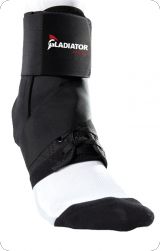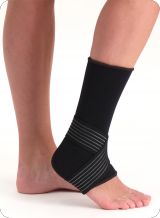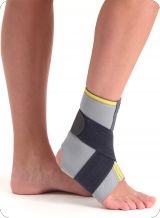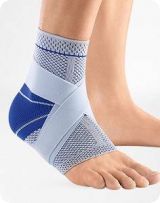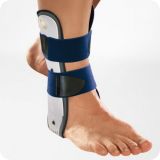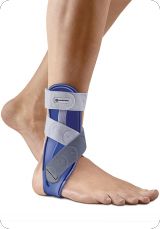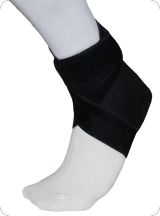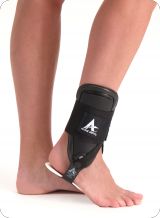Ankle Sprain
Did you sprain your ankle? If so, then our Medical Team has selected only the best products to help you with this. Prefer additional information? Feel free to read on, we're more than happy to explain it to you.
Read more »
Which brace is best for you?
For your convenience we use 3 protection levels, that way you will always pick the right brace.
Level 1: Is colored green, and stands for Basic protection.
Level 2: Is colored orange, and stands for Advanced protection.
Level 3: Is colored red, and stands for Highest protection.
General information
An accident happens quickly, especially when it comes to spraining your ankle. A small misstep or injury sustained on the football field can injure you seriously for around 8 weeks, up to the point that you won't be able to sport or walk pain-free. A sprained ankle isn't pleasant for anyone. Athletes are often very impatient, causing them to make the decision to resume their training too soon and therefore move incorrectly. This comes with a lot of risk, because the injury can worsen up to the point that ankle complaints can become persistent and/or chronic. Therefore, we strongly discourage this.
Diagnosis
First, it is important to determine whether you actually sprained your ankle. The ankle is strengthened by tendons, ligaments and a joint capsule. When you sprain your ankle, you usually feel a sudden and sharp pain on the in and/or outside of the ankle. The worst pain diminishes after a few minutes, allowing you to walk carefully again. Usually, a swelling occurs under or on the ankle, which later sinks to lower parts, such as the heel, toes or outer edge of the foot. Sometimes, a bruising can be seen on the rear foot. In some cases, the most extreme pain persists for a long time and you can no longer stand on your foot. This means, that you have broken or torn something in your ankle. In that situation, you will have to contact the doctor or emergency department of a hospital immediately. If you heard a snapping sound or your lower leg, ankle or foot deviate from their normal position, you will have to go to the hospital immediately. They will then make an X-ray to determine the fracture.
Treatment
- Cooling: Cool directly with an ice-pack or ice cubes. Repeat this 4 to 5 times a day.
- Elevate your ankle
- Painkillers: You can take ibuprofen or paracetamol against the pain.
- Movement: Try to walk again, this expedites recovery. You do have to pay attention to the fact that you constantly place your foot right in front of you. If the pain increases while walking, it is better to stop. Cycling, or repetitively moving the foot up and down, prevents the joint from growing stiff.
- Work up: Gradually increase the pressure. In some cases, it is recommended to engage a specialist.
Recovery
The recovery can take 4 to 5 days before you can stand on your feet again. The pain should be reduced in such a way that this will be possible again. If this is not the case, you should contact the doctor. If you can in fact stand again after these days, you can assume that you had a slight ankle sprain. Pretty much everyone can function normally again after 6 to 8 weeks and sport normally again after 8 to 12 weeks. It is recommended not to exercise for 2 to 3 weeks, and to resume your sportive activities when the pain is completely gone. We can also recommend to wear a brace for protection and support when resuming your activities. Two of the many braces we have that help protect and support you after a sprained ankle are the Bauerfeind AirLoc Ankle Support and the Medidu Premium Ankle Support.


